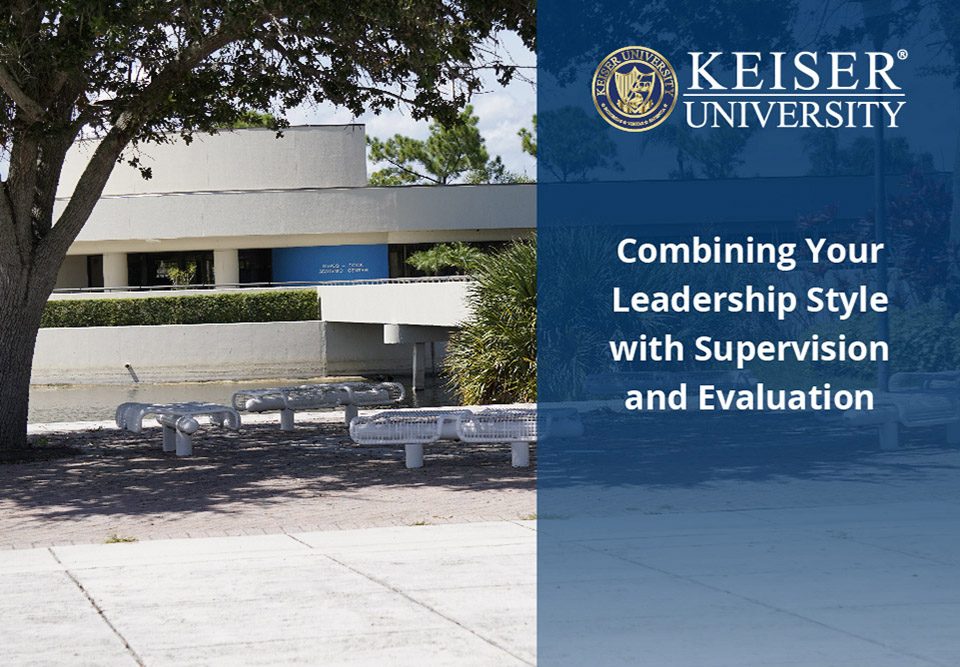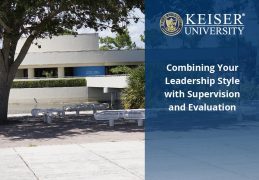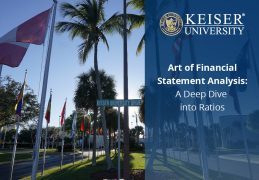Educational leaders are called to inspire those around them to provide all students with the best possible learning experiences and outcomes. Still, they also must supervise those providing instruction in the classroom to assure equal access to effective learning. Knowing how to combine personal leadership style with supervision and evaluation will allow leaders to effectively manage staff and cultivate a positive culture.
Understanding Leadership Styles in Supervision
Most educational leaders have to spend some time supervising teachers and support staff, requiring leaders to adopt a leadership style that allows them to supervise effectively and fairly. By recognizing the impact that leadership style can have on supervisory skills, a leader can adapt accordingly.
Overview of Leadership Styles
According to the National Society of Leadership and Success, leadership styles are defined as the approaches that individuals use to guide and motivate those around them. Individual leadership style may vary based on the circumstances, with most leaders using a blended approach to leadership.
Importance of Leadership in Evaluation
As you continue to adopt a particular leadership style, you will want to consider a leadership evaluation. By evaluating your approach to leadership, you can set measurable goals to continue to improve and grow within your position.
Transformational Leadership in Supervision and Evaluation
Defined by their energy and enthusiasm, transformational leaders can be particularly effective when it comes to supervision and evaluation. These leaders are often looking through a positive lens and seek to use constructive feedback to bring out the best in those they are evaluating.
Inspiring Change and Growth
Transformational leaders are known for their ability to inspire those around them. They strive to work with every member of the team to help each individual reach their full potential.
Motivating Teams for Excellence
Transformational leaders often leverage evaluations to motivate staff to do better and reach higher. Rather than outlining criticisms, they showcase how the individual can improve to enhance the learning environment for all students.
Instructional Leadership Style in Workplace Evaluation
Instructional leadership is a leadership style exclusive to the education field. The instructional leadership model requires administrators and educational leaders to work alongside teachers to provide them with personalized guidance and support.
Guiding Teams Through Knowledge Sharing
Given the hands-on approach of the instructional leadership style, it is not surprising that it is considered one of the most effective leadership styles in education. By using this approach, educational leaders can share their knowledge and experiences while guiding the educators working in the classroom.
Aligning Goals with Performance
In addition, instructional leaders can evaluate performance in real-time and ensure that those evaluations align with the overall goals of the educational facility.
Constructivist Leadership Style for Collaboration
The constructivist leadership style is defined by creative and critical thinking as well as collaboration. Educational leaders who adopt the constructivist style work to empower those they supervise and encourage them to resolve their own problems by giving them freedom and autonomy.
Building Collaborative Work Environments
In an educational environment, administrators, teachers and support staff must work together to prioritize the needs of all students. The constructivist leadership style is ideal for cultivating an environment where everyone feels confident sharing ideas and comfortable working together toward common goals.
Encouraging Critical Thinking
This dynamic approach to leadership encourages critical thinking and the development of other pivotal soft skills, making it one of the best approaches for educational leaders to adopt.
Democratic Leadership Style in Supervision
Rather than taking a top-down approach to leadership, democratic leaders encourage active participation and involvement among those that they supervise. This is particularly beneficial in education, as democratic leaders can utilize other teachers’ input to develop fair, equitable and valuable policies.
Fostering Inclusivity and Team Engagement
Democratic leaders actively work to keep their team members engaged, allowing them to feel as if they have input in the way that the school is run. This creates a culture of inclusivity, and as a result, the entire school community benefits.
Promoting Transparency in Evaluations
During the evaluation process, democratic leaders are more likely to be transparent. They will likely work closely with teachers to involve them in the evaluation process and provide information about the steps taken to evaluate their performance in the classroom environment.
Emotional Leadership Style for Supportive Management
At a time when schools are working to prioritize social-emotional learning in students, the emotional leadership style has become more valuable in the educational setting. Emotional leaders can take an empathetic and supportive approach to management, often recognizing that educators are human beings whose personal lives must be prioritized for them to be able to balance the demands of their jobs.
Building Empathy in Leadership
Emotional leaders can effectively balance not only their own emotions and experiences but also the feelings of those that they are leading. Emotional leaders often lead with empathy, allowing them to connect with those they are supervising on a deeper level.
Addressing Emotional Well-Being
Emotional leaders prioritize the emotional well-being of their staff, which is vital in the field of education, which is known for its high burnout rate. By acknowledging the emotions and experiences of teachers within the evaluation process, emotional leaders can empower staff to continue working toward goals while providing the support they need.
Transactional Leadership in Performance Metrics
The transactional leadership style is effective in the age of data-based learning, as it relies heavily on performance metrics to evaluate educators. Principals and administrators who rely on this leadership style often prioritize data within the supervision and evaluation process.
Achieving Goals Through Structure
The transactional leadership style is a structured approach to leadership that relies on a system of rewards and punishment to motivate staff. For educational leaders who need increased structure, this leadership style can help them achieve their goals for their staff.
Setting Clear Expectations
While the transactional leadership style can seem rigid, it is also one of the best ways to set clear expectations for teachers. This is particularly important during the evaluation process when teachers should be aware of how they are being evaluated and what will happen after the results of the evaluation. Authoritative Leadership in Supervision
Sometimes referred to as visionary leadership, the authoritative leadership style is one of the more traditional approaches to leadership. Authoritative leaders are often effective supervisors because they can set clear direction for their staff and outline their expectations.
Providing Clear Direction
Authoritative leaders are often goal-oriented individuals that work to establish benchmarks for the team. Once the goals have been identified, they provide staff with clear direction, providing educators with the structure and support needed within the classroom environment.
Making Decisive Evaluations
When evaluating educators, authoritative leaders have a tendency to set clear parameters and take decisive action. In many cases, they work with a rubric to evaluate and compare the results of the evaluation with their own expectations of their teachers and staff members.
Servant Leadership Style for Employee Growth
Educational leaders who believe that their staff’s personal and professional satisfaction directly impact their performance often adopt the servant leadership style. This leadership style often leads to organic growth and development within the educational facility because the staff members feel supported and acknowledged.
Empowering Teams Through Support
Servant leaders emphasize employee satisfaction, so they often work closely with those they supervise to identify needs and provide personalized support. This allows them to empower employees and encourage teachers to continue pushing toward personal and professional goals.
Building Trust and Commitment
Servant leaders are often able to retain their most effective educators because of their commitment to cultivating a positive work environment. This unique approach fosters trust throughout the school, which has a direct impact on workplace morale as well as learning outcomes.
Strategic Leadership Style in Long-Term Success
By relying on different facets of each different leadership style, strategic leaders can look into the future and carve out a path for long-term success at the organization. Among educational leaders, the strategic leadership style is particularly valuable.
Planning for Sustainable Growth
Rather than planning for one semester or one school year, strategic educational leaders can create a data-driven plan for sustainable growth that prioritizes learning outcomes among students as well as staff development and retention. At a time when the educational landscape is changing rapidly, strategic leadership has never been more important.
Balancing Supervision with Vision
Strategic leaders can balance their day-to-day supervisory tasks with long-term planning, setting them apart from other leaders who may focus more heavily on the short-term. Strategic leaders also often use their vision for the school to encourage creative thinking and collaboration among staff.
Combining Leadership Styles for Effective Supervision
As an educational leader, you may find that you gravitate toward one particular leadership style, but in reality, you will probably combine several styles to effectively guide staff.
Adapting Styles to Meet Team Needs
Modern educational leaders must be flexible and agile, and need to adapt their style to meet the needs of educators on any given day. For example, some circumstances require a more empathetic approach, whereas others require authority and clear direction.
Developing a Holistic Leadership Approach
To earn the respect of staff, leaders should consider developing a holistic approach to leadership that considers all of the current circumstances. By evaluating the situation, an effective and motivating leadership approach can be adopted.
Explore the Relationship Between Leadership and Supervision at Keiser University Graduate School
Understanding the various leadership models can help you determine which style best suits your personality and your professional goals. At Keiser University Graduate School, we offer a variety of graduate degree programs for aspiring leaders, such as a Doctor of Philosophy in Educational Leadership, a Master of Science in Educational Leadership and a Doctor of Education degree program. All of these graduate degree programs allow you to understand the relationship between supervision and instructional leadership and provide you with an opportunity to grow as an educator and administrator.
Request more information about our graduate degree programs today.





 The instructors at Keiser University impacted my life. They believed in my ability to become a great graphic designer, regardless of how I felt about my skills. KU helped to prepare me for the real world and got me to where I am today.
The instructors at Keiser University impacted my life. They believed in my ability to become a great graphic designer, regardless of how I felt about my skills. KU helped to prepare me for the real world and got me to where I am today.
